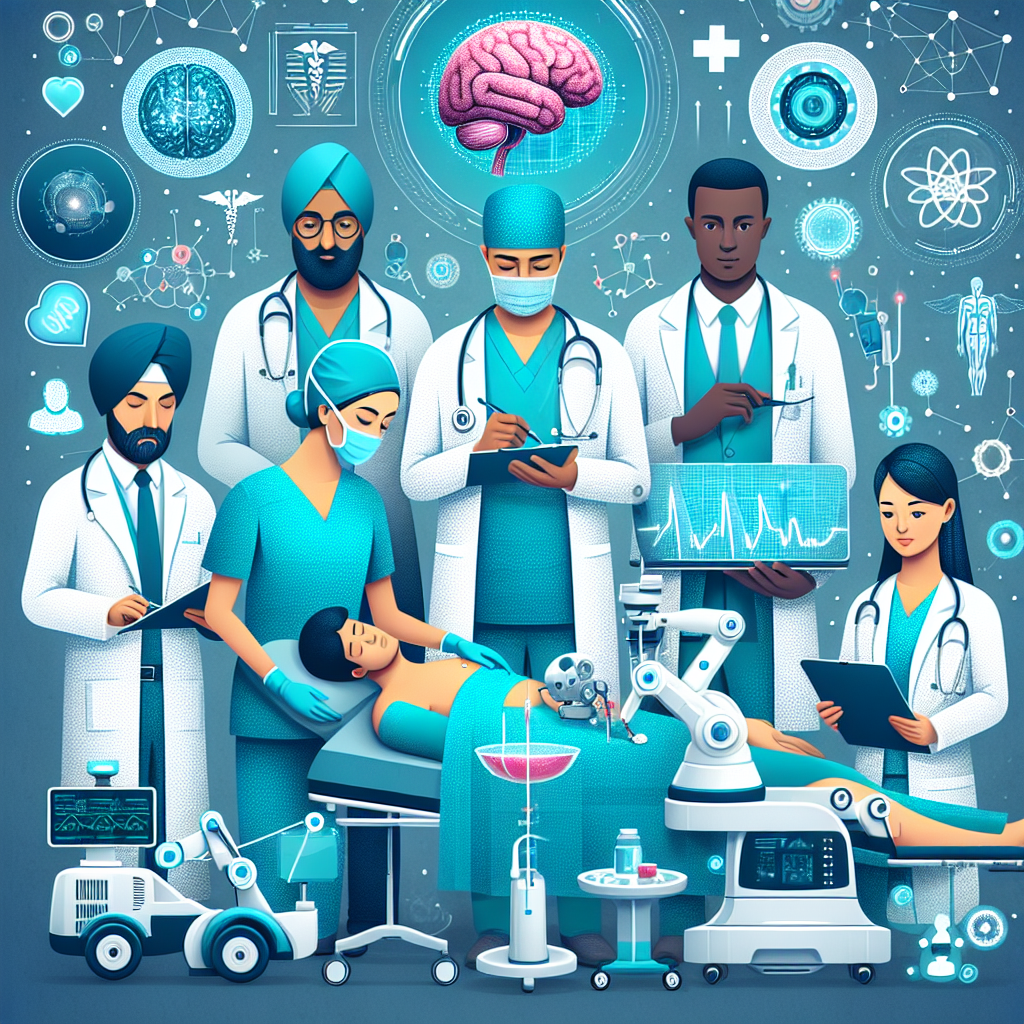Artificial Intelligence (AI) has been making waves in various industries, and healthcare is no exception. From improving patient care to streamlining administrative tasks, AI is revolutionizing the way healthcare is delivered and managed. In this article, we will explore how AI is transforming the healthcare industry and the potential benefits it offers.
1. Improved Diagnostics and Treatment Planning
One of the most significant ways AI is revolutionizing healthcare is through improved diagnostics and treatment planning. AI-powered algorithms can analyze vast amounts of data, such as medical images, genetic information, and patient records, to help healthcare providers make more accurate and timely diagnoses. For example, AI can help radiologists detect abnormalities in medical images, such as X-rays and MRIs, that may be missed by the human eye.
AI can also assist in developing personalized treatment plans for patients based on their unique genetic makeup and medical history. By analyzing data from millions of patient records, AI can identify patterns and trends that can help healthcare providers make more informed decisions about the best course of treatment for each individual.
2. Remote Patient Monitoring
AI has also enabled remote patient monitoring, allowing healthcare providers to track patients’ vital signs and health metrics in real-time from a distance. This technology is particularly useful for patients with chronic conditions who require continuous monitoring and intervention. For example, AI-powered devices can alert healthcare providers if a patient’s blood pressure or glucose levels are outside of the normal range, allowing for early intervention and prevention of complications.
Remote patient monitoring can also improve patient outcomes by enabling healthcare providers to detect changes in a patient’s condition sooner and adjust their treatment plan accordingly. This can lead to fewer hospitalizations, reduced healthcare costs, and improved overall patient satisfaction.
3. Predictive Analytics
AI is also revolutionizing healthcare through predictive analytics, which involves using AI algorithms to forecast future events based on historical data. Predictive analytics can help healthcare providers identify patients who are at risk of developing certain conditions or complications, allowing for early intervention and preventive measures.
For example, AI can analyze a patient’s medical history, lifestyle factors, and genetic predispositions to predict their likelihood of developing diabetes or heart disease. Healthcare providers can then use this information to develop personalized prevention strategies for at-risk patients, such as lifestyle modifications or medications.
4. Administrative Efficiency
AI is also transforming the administrative side of healthcare by automating repetitive tasks and streamlining processes. AI-powered chatbots can handle patient inquiries, appointment scheduling, and medication refills, freeing up healthcare providers to focus on more complex tasks. AI can also assist with medical coding and billing, reducing errors and improving accuracy in reimbursement processes.
By automating administrative tasks, AI can help healthcare organizations save time and resources, leading to increased efficiency and cost savings. This allows healthcare providers to spend more time on patient care and less time on paperwork and administrative duties.
5. Drug Discovery and Development
AI is also revolutionizing the drug discovery and development process by accelerating the identification of new drugs and treatments. AI algorithms can analyze vast amounts of biological and chemical data to identify potential drug candidates and predict their efficacy and safety. This can significantly reduce the time and cost of bringing new drugs to market, allowing for faster access to life-saving treatments for patients.
AI can also help researchers repurpose existing drugs for new indications, identify patient populations that may benefit from a particular treatment, and optimize clinical trial design. By leveraging AI in drug discovery and development, healthcare providers can bring innovative therapies to market more quickly and efficiently.
FAQs:
Q: How is AI being used in medical imaging?
A: AI is being used in medical imaging to improve the accuracy and efficiency of diagnosing conditions such as cancer, heart disease, and neurological disorders. AI algorithms can analyze medical images, such as X-rays, MRIs, and CT scans, to detect abnormalities that may be missed by human radiologists. This can lead to earlier detection of diseases, more accurate diagnoses, and improved patient outcomes.
Q: Is AI replacing healthcare providers?
A: AI is not replacing healthcare providers, but rather augmenting their capabilities and improving the quality of care they can deliver. AI can assist healthcare providers in diagnosing conditions, developing treatment plans, and monitoring patients, but ultimately, human judgment and expertise are still essential in providing compassionate and personalized care to patients.
Q: What are the ethical considerations of using AI in healthcare?
A: There are several ethical considerations to consider when using AI in healthcare, such as patient privacy, data security, bias in algorithms, and the potential for automation to replace human jobs. It is crucial for healthcare organizations to prioritize patient safety, data protection, and transparency when implementing AI technologies to ensure that they are used responsibly and ethically.
In conclusion, AI is revolutionizing healthcare by improving diagnostics, treatment planning, remote monitoring, predictive analytics, administrative efficiency, drug discovery, and development. By leveraging AI technologies, healthcare providers can deliver more personalized, efficient, and cost-effective care to patients, leading to improved outcomes and better overall health for individuals and communities. As AI continues to advance, it is essential for healthcare organizations to adapt and embrace these technologies to stay ahead of the curve and provide the best possible care to patients.

